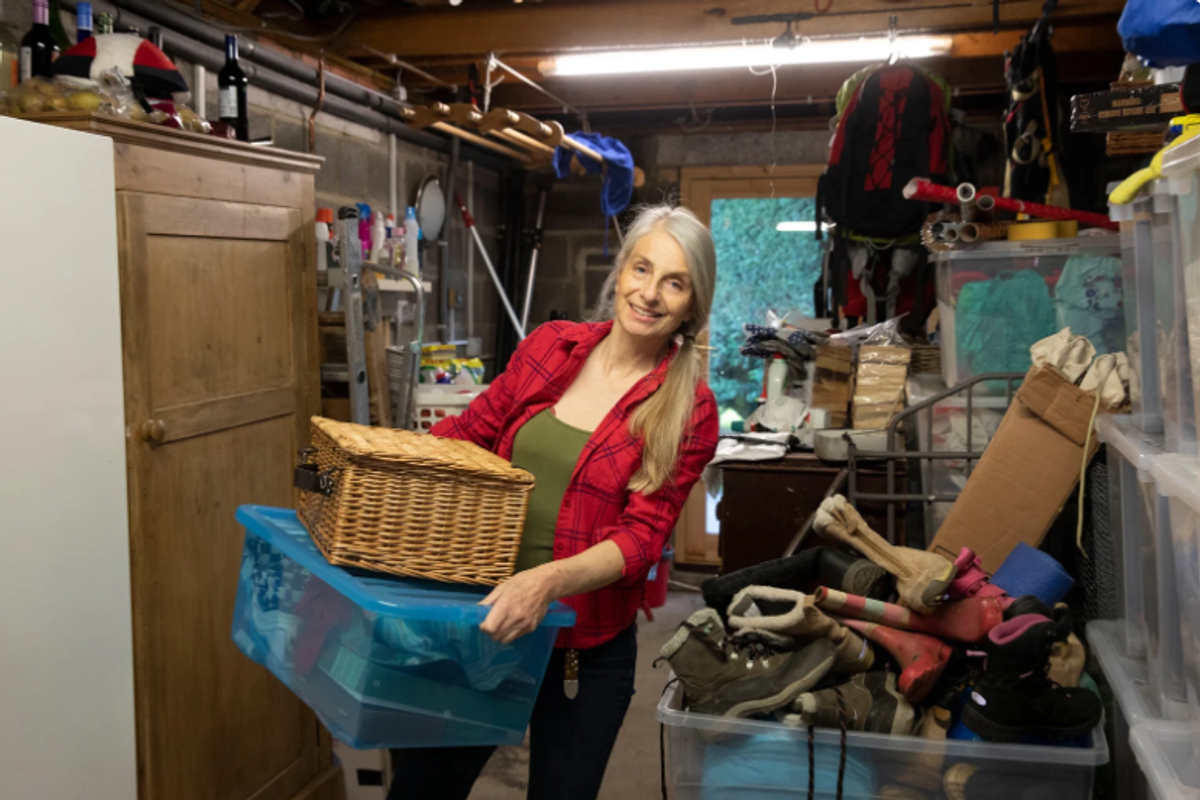5 ways to talk to your kids about race that can help make the future brighter.
'It takes lots of practice.'
PBS did a poll about the state of race relations in America. What they discovered wasn't too surprising.
We have some work to do when it comes to race relations. Photo from PBS NewsHour, used with permission.
It seems most people, regardless of skin color, think we can do better. Taeku Lee thinks so too. He's a professor of political science and law at the University of California at Berkeley. Other than being a ridiculously brilliant dude, he spent years studying race relations and is one of the most respected thought leaders in that arena.
Here are five things Lee suggests to raise racially conscious children.
1. Focus on teaching empathy. If you can imagine yourself in the shoes of a another person, your kids will too.
As parents, it's up to us to set the example of empathizing with others, and it's easier than we may think. When we teach our kids to share and to take turns and when we model that behavior ourselves, that teaches them empathy. They'll learn it by watching us.
We could probably start and end with that. If we all treated others the way we wanted to be treated, the world would improve instantly.
Classy kids. GIF via KBSEntertain/YouTube
Lee said in an interview with Upworthy, "By teaching children the simple acts of sharing and taking turns, they will learn to see the world through the eyes of someone else. When children develop into adults who value dignity and respect, they will better understand these as universal values if they first have moral foundations in the value of empathy."
When we have empathy for other human beings and recognize the value of their unique experiences, things tend to go better.
Just ask a former white supremacist.
2. Talk to your kids before everyone else does. Ask them lots of questions and encourage them to do the same. If you remain open-minded, your kid will too.
Stop me if you've heard this before, but parenting is hard.
Many of us are overworked and overtired and adding the "race relations talk" to our endless to-do list isn't exactly something we look forward to doing.
GIF from "Old School."
But, if we don't suck it up and have the racism talk with our kids, even if we reeeeealllly don't want to, Lee is quick to point out that someone else will:
"Children are endlessly curious and coming to their views about how to read and represent race. Left alone, there are enormous everyday forces — in the entertainment our children consume and in seemingly innocuous classroom and playroom interactions — where implicit biases begin to set their roots."
What happens if we wait too long to have the discussion with our kiddos about race and we start seeing them displaying those biases?
Lee states, "One of the most powerful ways to counter implicit biases is to call them out, question the unconscious associations we make about what and who is 'good' or 'bad,' and by doing so, take a fresh new look at things. From this standpoint, parents should talk about race with an open mind to learning from their children as much as they convey learning to their children."
3. Words are great, but if you tell your kids one thing, you better make sure your actions reflect what you've told them. In other words, you gotta practice what you preach.
Kids are smart and extremely observant. Just as easily as we notice the not-so-pleasant aroma of a blowout diaper, our little ones notice when our words and our actions don't jibe.
According to Lee, "Children are frighteningly good at picking up cues that you don’t even know you are giving. It's one thing to discuss all the reasons why you should not judge, hate, celebrate, respect, but those reasons go deeper when they are embodied in your actions. It's not just about explicit things, like using epithets to describe groups or publicly voicing negative stereotypes, but also subtler things, like reacting to microaggressions."
From the mouth of babes. GIF from "Modern Family."
Put simply, it's easy to refrain from saying really horrible things. It's more challenging to stop the seemingly innocuous comments (known as microaggressions) that our kids could pick up on.
"Well, you definitely don't act black."
"C'mon, you're Asian, you must be good at math."
"Puerto Rican, Mexican — you know what I mean."
Be warned. Our kids are always watching and listening.
4. Venture out of your 'hood and expose your kids to different people and places.
According to the Pew Research Center, close to 40% of Americans have never moved away from their hometowns.
It makes it pretty challenging for kids to learn about different cultures if they rarely leave the comfort zone of their neighborhoods.
There's a beautiful world out there. Experience it. Image from the Daddy Doin' Work Instagram feed.
How do you expose your kids to other cultures and races and tradition if you don't have the budget, time, or patience to travel the globe with your kids?
Take advantage of the things in and around your community that will help your kids experience things outside their comfort zone.
"That could be anything from spending a weekend afternoon at a neighborhood flea market or going with your children to a Black Lives Matter protest or walking around an 'ethnic enclave.' Experiencing difference is much more powerful than just reading or talking about it. One of the enduring conditions under which genuine learning about the 'other' happens is through deep, meaningful interactions and experiences with other groups," says Lee.
You don't have to travel the globe to get beyond your community and introduce kids to things they don't normally see on an average day.
5. Help your kids learn how to identify racism, and teach them how to deal with it when they see it.
This is huge.
Teaching our kids to be "colorblind" or to not "see" race can be detrimental because it makes it harder for them to identify discrimination when it does happen.
Instead of raising our kids — regardless of what race they are — to see colorblindness as a solution to racism and discrimination, we need to teach them how to identify it when it happens and how to appropriately address it when they see it.
Should they tell a teacher or should they wait and tell you about it when they get home from school? Should they try to stop a bully themselves or should they find the person being bullied and offer them a hug?
Riley Curry requesting wisdom from her amazing dad.
There are no simple answers. However, there are some resources to help you have those talks.
In the meantime, we'd love to know, what are you doing to help guide your kids down a better path? Let us know on Twitter and Facebook.






 Friends sharing a moment in the sunlit park.
Friends sharing a moment in the sunlit park. Feeling the stress: A young woman holds her head in frustration.
Feeling the stress: A young woman holds her head in frustration. Friends sharing a laugh over coffee at a cozy café.
Friends sharing a laugh over coffee at a cozy café.
 Close up of lilac flowers. Photo by
Close up of lilac flowers. Photo by